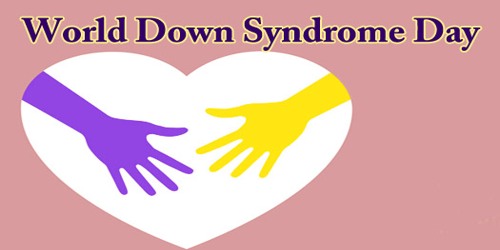World Down Syndrome Day (WDSD), 21st March, is a global awareness day which has been officially observed by the United Nations since 2012. World Down Syndrome Day is an official UN observance and not a public holiday. Down syndrome occurs when an individual has an extra partial (or whole) copy of chromosome 21. It is not yet known why this syndrome occurs, but Down syndrome has always been a part of the human condition. It exists in all regions across the globe and commonly results in variable effects on learning styles, physical characteristics, and health. According to the UN, it affects about 1 in 800 births worldwide, causing intellectual disability and associated medical issues.
Organizations such as Down Syndrome International have been organizing various activities for World Down Syndrome Day since 2006. In November 2011, the UN decided to officially observe the event from 2012 onwards, inviting governments and businesses to take part in World Down Syndrome Day. World Down Syndrome Day is observed in more than 60 countries worldwide. Many organizations and communities, including the United Nations (UN) and Down Syndrome International, promote World Down Syndrome Day to raise people’s awareness and understanding of Down syndrome. Activities and events that take place on March 21 showcase the abilities and accomplishments of people with Down syndrome. These events also focus on encouraging independence, self-advocacy, and freedom of choices for people with Down syndrome. The overall aim of the events is to:
- Show how effective and meaningful participation of persons with Down syndrome can be achieved via accessible information and communication, good support and inclusive consultation;
- Empower persons with Down syndrome, those supporting them and their representative organizations, to advocate for effective and meaningful participation;
- Reach out to key stakeholders, including education, health, and social care professionals, employers, community and public bodies, the wider disability movement, media, and the wider community to disseminate this message and bring about change.
The estimated incidence of Down syndrome is between 1 in 1,000 to 1 in 1,100 live births worldwide. Each year, approximately 3,000 to 5,000 children are born with this chromosome disorder. The quality of life of people with Down syndrome can be improved by meeting their health care needs, including regular check-ups with health professionals to monitor the mental and physical conditions and to provide timely intervention be it physiotherapy, occupational therapy, speech therapy, counseling or special education. Individuals with Down syndrome can achieve optimal quality of life through parental care and support, medical guidance, and community-based support systems such as inclusive education at all levels. This facilitates their participation in mainstream society and the fulfillment of their personal potential. Many people wear odd socks on WDSD or ribbons or wrist bands which vary in color, but often include the words “Down syndrome” in their message.
















